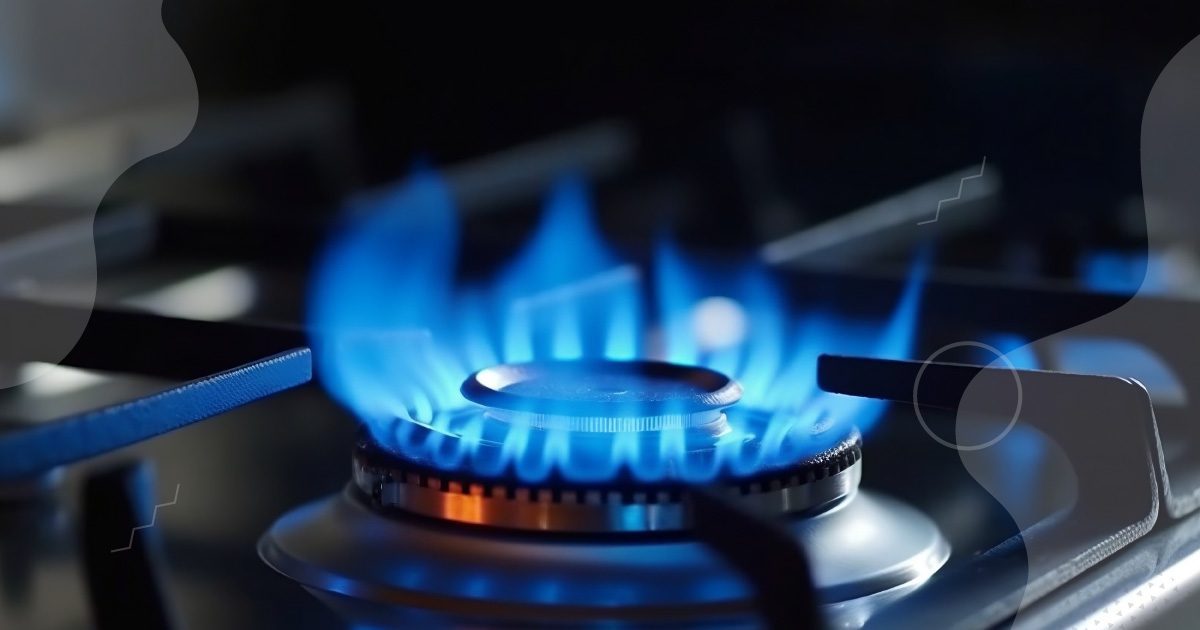A Guide to Natural Gas - NEC Coop
Oct 30, 2023 — Resources

Did you know the energy that cooks your dinner and heats your home has deep ties to ancient Earth? Read on to discover facts about natural gas and learn about its vital role in our daily lives.
What Is Natural Gas?
Natural gas is mainly methane and originates deep underground, often found in rock formations or near other hydrocarbons like coal. It is commonly found in rock layers or alongside other hydrocarbon deposits like coal.
Are Gas and Natural Gas the Same?
No, they aren’t. The term “gas” can refer to any gaseous substance, while “natural gas” specifically refers to the hydrocarbon gas mixture used for heating, cooking, and as a fuel source.
How Are Gas and Natural Gas Different?
Generally, “gas” could refer to any state of matter that’s neither a solid nor a liquid – like the oxygen we breathe. On the other hand, natural gas is a specific type of gas primarily made up of methane, often accompanied by small amounts of other gases like ethane and propane.
How Is Natural Gas Used?
Natural gas wears many hats. It’s most commonly used for:
- Heating Homes and Businesses – Many buildings have furnaces powered by natural gas.
- Cooking – Gas stoves and ovens rely on it.
- Generating Electricity – Some power plants run on natural gas.
- Fuel for Vehicles – Certain cars and buses are designed to use compressed natural gas as a cleaner alternative to gasoline.
- Industrial Uses – It’s a primary component in making plastics, chemicals, and even fertilizers.
Where Does Gas Come From? How Is It Extracted?
Natural gas originates from the remains of plants and animals buried millions of years ago. Over time, with heat and pressure, these organic materials transformed into hydrocarbons.
To extract it:
- Drilling – Just like oil, we drill wells deep into the ground to access natural gas deposits.
- Fracking – Sometimes, hydraulic fracturing (or “fracking”) is used, where water, sand, and chemicals are injected to release natural gas from rock formations.
- Collection – Once accessed, natural gas is brought to the surface, where impurities are removed before it’s transported to end users.
Unconventional gas refers to natural gas that is difficult to extract due to technical challenges or prohibitive costs. Here are six types of unconventional gas:
- Deep gas – These reservoirs are situated deep, often over 15,000 feet below Earth’s surface, which results in high extraction costs.
- Tight gas – This gas is trapped beneath a hard, impermeable rock, making its extraction both challenging and costly.
- Shale gas – Located within shale deposits – a soft, sedimentary rock – this gas has become a key focus for natural gas companies.
- Coalbed methane – This gas forms within coal and can cause mine explosions if released, posing a significant hazard to coal miners.
- Geopressurized zones – Found between 10,000-25,000 feet deep, these zones contain gas under high pressure in silt and sand. While abundant, they are tough and expensive to tap into.
- Arctic and subsea hydrates – These consist of methane trapped in Arctic permafrost or beneath seabeds. As the Arctic permafrost melts, it releases methane.
Is Natural Gas Considered Clean Energy?
Compared to coal and oil, natural gas emits less carbon dioxide when burned, which has earned it a reputation as a “cleaner” fossil fuel. However, it’s not entirely without environmental impact. Methane, its primary component, is a potent greenhouse gas if released directly into the atmosphere.
Natural gas can leak during the extraction process. These leaks either enter the atmosphere or contaminate the surrounding environment. Predominantly composed of methane, natural gas can intensify global warming, as methane retains heat thirty times more efficiently than carbon dioxide. After about a decade, this methane transitions into carbon dioxide, perpetuating the warming effect.
Fracking, a method of extraction, sparks a lot of controversy. Many local organizations and activists are against fracking, claiming it has negative environmental impacts, puts water sources at risk, uses large amounts of water, and poses various other dangers.
Hence, natural gas isn’t as clean as energy sources like wind, solar, or geothermal.
What Does the Future Hold for Natural Gas?
The future of natural gas is twofold. On one hand, its demand is likely to grow as countries look for cleaner energy alternatives to coal. On the other, the push for fully renewable energy sources, like wind and solar, could reduce its prominence in the long term. Furthermore, technological advancements might also shape how we extract, transport, and use natural gas in the future.
Natural gas plays an important role in today’s energy landscape. Understanding its origins and uses can help us make informed decisions as we navigate our energy-dependent world.
Sources:
“Natural gas explained,” U.S. Energy Information Administration, https://www.eia.gov/energyexplained/natural-gas/
“What Is Natural Gas? Here’s What You Need To Know,” Just Energy, https://justenergy.com/blog/what-is-natural-gas-heres-what-you-need-to-know/
“Use of natural gas,” U.S. Energy Information Administration, https://www.eia.gov/energyexplained/natural-gas/use-of-natural-gas.php
“Natural Gas.” National Geographic, https://education.nationalgeographic.org/resource/natural-gas/
“Unconventional Natural Gas Resources,” Natural Gas, http://naturalgas.org/overview/unconventional-ng-resources/
“Fracking: Overview, Advantages and Disadvantages, FAQ,” Investopedia, https://www.investopedia.com/terms/f/fracking.asp

